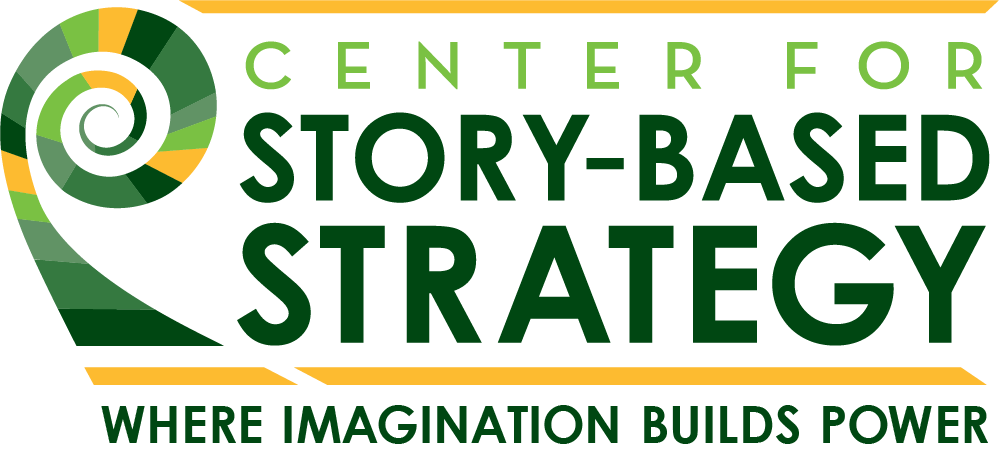Making Strategy Interactive: Kedar Reddy is using story-based strategy to build better digital campaign tools
Describe yourself in three words.
Resilient, Resourceful, Rebellious
Tell us about yourself.
I was always drawn to the creative arts, and their application to social justice. In college I learned to code in art classes and began experimenting with new media art and creative coding. In that process I learned how influential the tools we build are in shaping our realities in often unseen ways. In grad school I studied game design. There I discovered the power of interactive media to bring users closer to perspectives that are not their own.
I bring my background as an artist, software developer, and game designer to movement organizing. I started as an organizer by developing short games, GIFs, and animations for narrative shift campaigns as part of grassroots coalitions. Quickly I realized that in order to scale our impact we need to build tools that could be used by the larger community of communication designers and narrative strategists. Over the last few years I have built tools to make it easy for organizers to create GIFs as well as tools for organizing on social media.
Tell us about the work you brought into your Fellowship.
I founded Organiz in 2020 after a few years of manually putting together social toolkits and Drive folders full of graphics for Twitterstorms to push back against the latest round of disinformation or act of bigotry. Organiz is a platform that enables organizers to coordinate and tweet together (strategically, but without saying the exact same thing) with their communities to trend their causes.
Explain to us why you are doing this work.
I became an organizer because I wanted to end caste, the system of oppression that’s rooted in Hinduism. I started Organiz to help with my anti-caste work. In the long term I want to play a role in designing and building equitable tools to enable marginalized, oppressed people to build their cultural power, and take back their narratives online.
Share how folks can get involved with your work or see your work’s final product.
Sign-in on Organiz and request organizer access to start your own Twitterstorms! As you create your first campaign you will see a big red button that says Talking Point Wizard. Click this button to come up with a prompt for your campaign!
The Talking Point Wizard is inspired from Race Forward’s Narrative Pyramid, which is a simple framework to check that your messages and stories fit your deeper narratives or worldviews and vice versa. For Organiz I simplified the ideas in the Narrative Pyramid to create a madlib to help organizers come up with a prompt for their campaigns.
As you can see in the GIF, it asks the organizer to input their ideology/worldview, then their campaign goals, and automatically generates a prompt based on a couple of different templates. Prompts generated by the Talking Point Wizard ask the campaign participant to think about how the campaign goal will help the cause of the larger narrative shift goals. As we test Organiz in more campaigns, we may add more of these madlib tools to help organizers come up with prompts.
How would you describe Story-based Strategy (SBS) to someone who has never heard about it?
SBS is a framework to help you figure out your campaign’s narrative strategy. It’s composed of tools or worksheets that you can use to analyze the opposition’s story, the current popular narrative about your issue, and develop a way of pitching or talking about your issue that will win over the folks you need to win!
How did SBS affect your work on the project?
SBS got me thinking about the different ways in which Organiz can help organizers finalize or even come up with a narrative strategy for their campaigns. Organiz is primarily a tool for disseminating messaging once a narrative strategy is already in place, but with the fellowship I wanted to explore how it can help organizers with pre-campaign strategizing.
How was working on this project, using SBS, different from your work without SBS?
Click to view full size: Cornerstones is a key strategy-landing tool in Story-based Strategy, and this project.
My project was different in that I was not using SBS to help me design Organiz, but rather thinking about if and how SBS would be useful to organizers using Organiz. In that way I wanted to build features that made SBS tools more accessible to users on Organiz.
If you could have another iteration of your work, how would it have changed?
For the fellowship I built a feature for Organiz where organizers could come up with prompts for their partners, and supporters to respond to when scheduling tweets. I would not work on another iteration of the feature until I have more feedback on it. If I were to do the Fellowship again I would start from a different angle. I would build a way for organizers to crowdsource social media listening in order to better understand prevalent narratives about their causes in real-time. In this way Organiz could act as a way for organizers to more accurately define the narratives they see on social media which they can in turn input into SBS tools to come up with their campaign narratives.
Do you think SBS will change how you relate to future work in collaboration with others? How? And why?
Yes. SBS has instilled in me the importance of figuring out the most tactical narrative positioning for any campaign. I will be using SBS and other narrative strategy frameworks to work on messaging. Frameworks are useful to remove your own biases and rely on a more objective measure and process for arriving at the narrative needed to win.



